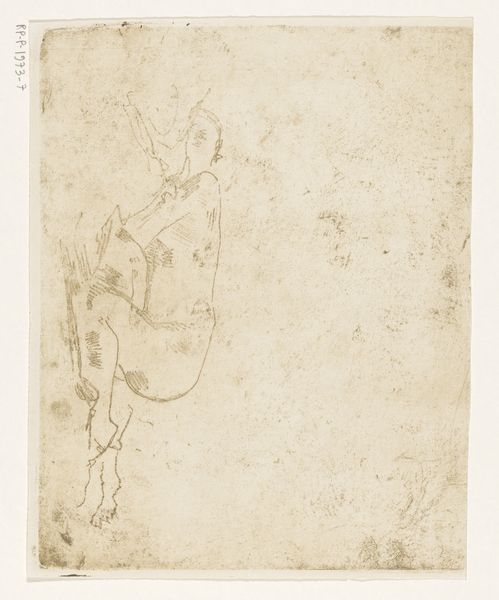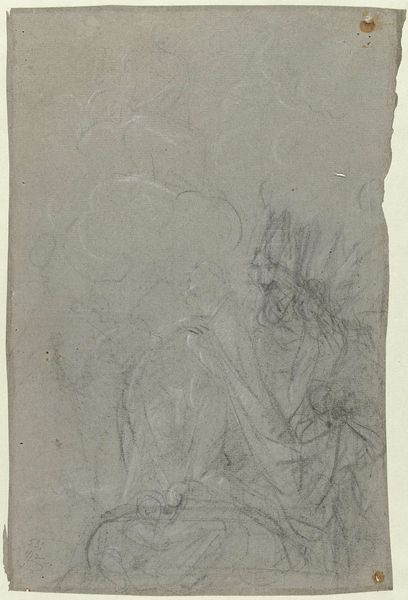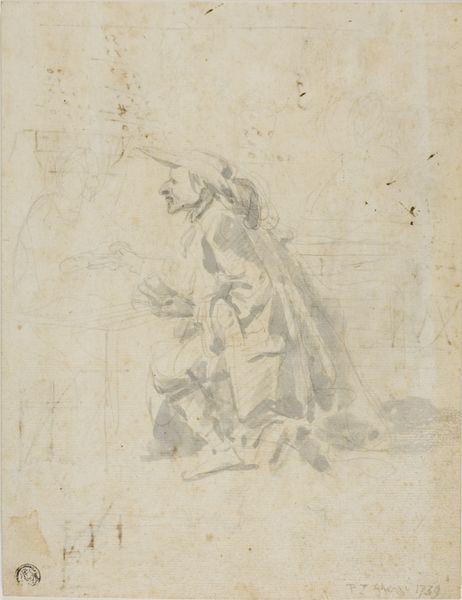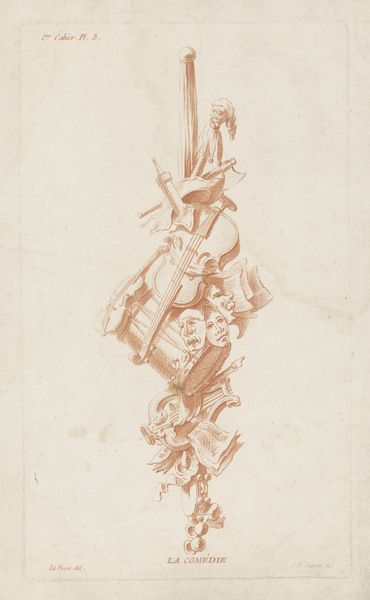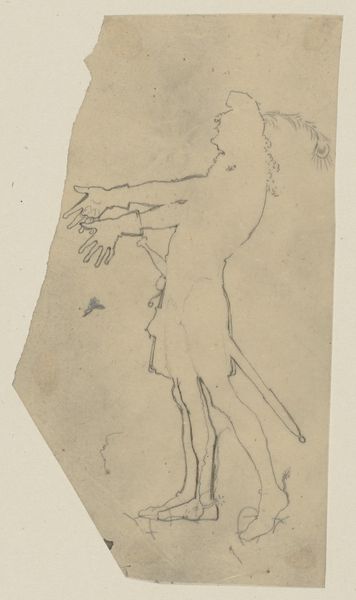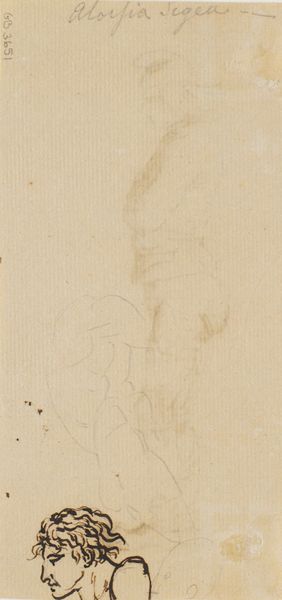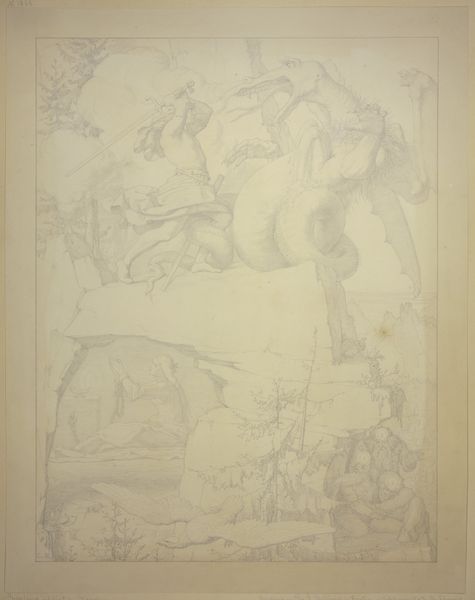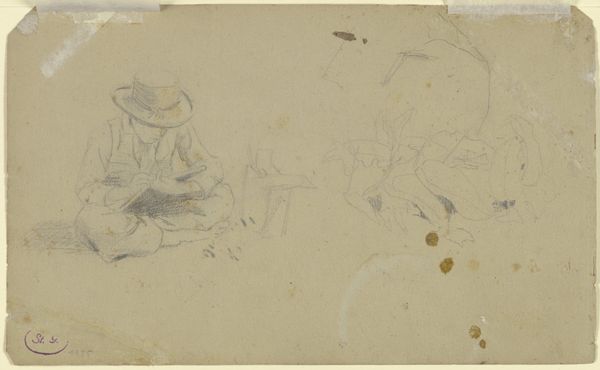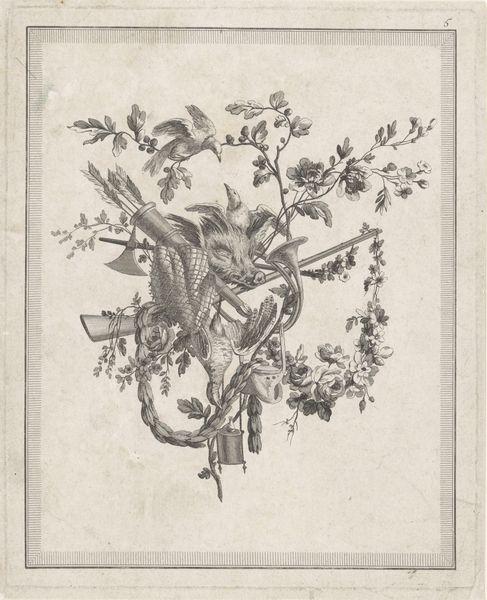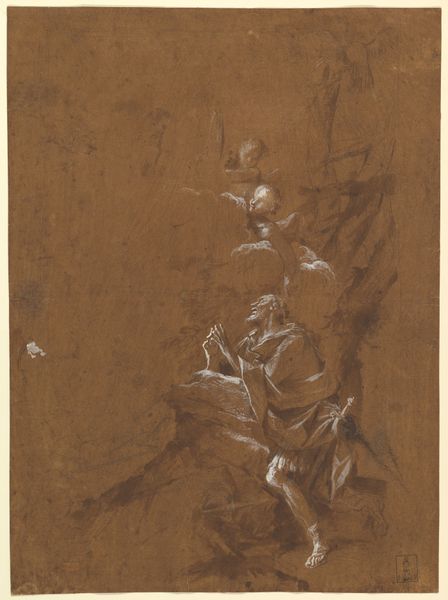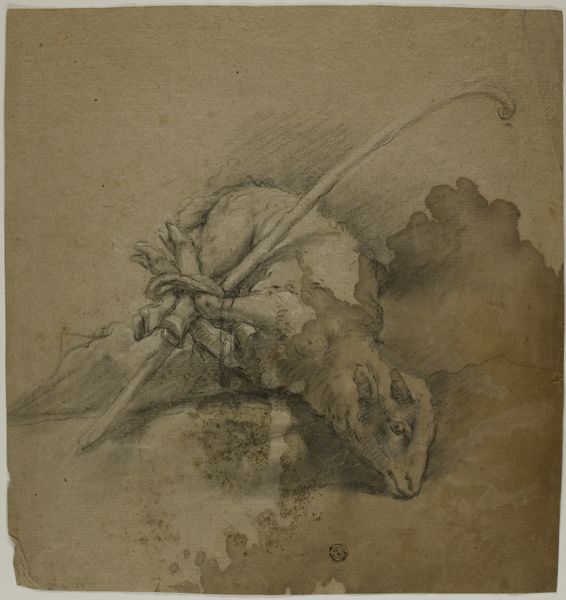
drawing, paper, pencil
#
drawing
#
organic
#
dutch-golden-age
#
paper
#
pencil
#
line
Dimensions: 335 mm (height) x 231 mm (width) (bladmaal)
Editor: We're looking at "Plantestudie," a pencil and paper drawing from sometime between 1664 and 1750, currently housed at the Statens Museum for Kunst. It's credited to Rachel Ruysch. I'm immediately drawn to its delicacy; the fine lines almost seem to float on the page. What do you see in this work, beyond its apparent subject matter? Curator: I see the enduring power of observation rendered in deceptively simple lines. Ruysch, working in the Dutch Golden Age, wasn't merely depicting a plant. She was tapping into a deeply ingrained cultural fascination with the natural world – a fascination that was intertwined with emerging scientific inquiry, the spice trade, and colonial expansion. But what plant *is* it? And what did it mean, symbolically? Editor: It looks like maybe grapevines? Could that tie into religious symbolism, like the Eucharist? Curator: Precisely! Grapevines, universally, carry potent symbolism, often connected to fertility, abundance, and, yes, the Eucharist and sacrifice. But look closely at the composition. The delicate tracery of the leaves, the way the light seems to filter through... does it remind you of anything else, beyond the religious? Editor: Hmm… Maybe an anatomical drawing? Or the meticulous botanical studies that were becoming popular at the time? Curator: Exactly. There’s a tension here – a blend of artistic observation, scientific curiosity, and the echo of older, religious connotations. The cultural memory embedded within such a seemingly simple image is striking. It’s a reminder that even the most 'realistic' depictions are laden with layers of meaning and history. Editor: So much more than just a pretty drawing! I never would have thought of all those layers. Thanks for opening my eyes to that. Curator: My pleasure. And it reminds us to appreciate not just the visible, but the invisible narratives that art carries across time.
Comments
No comments
Be the first to comment and join the conversation on the ultimate creative platform.
